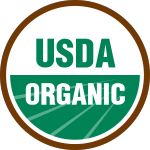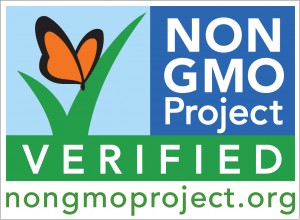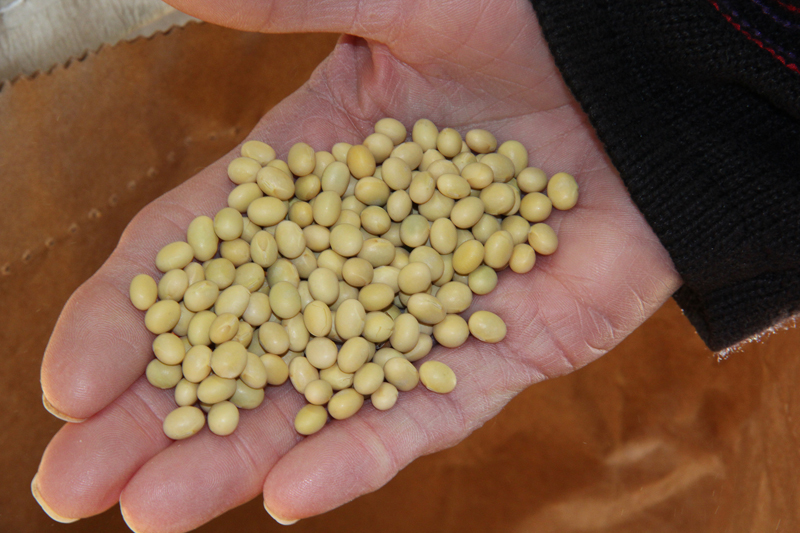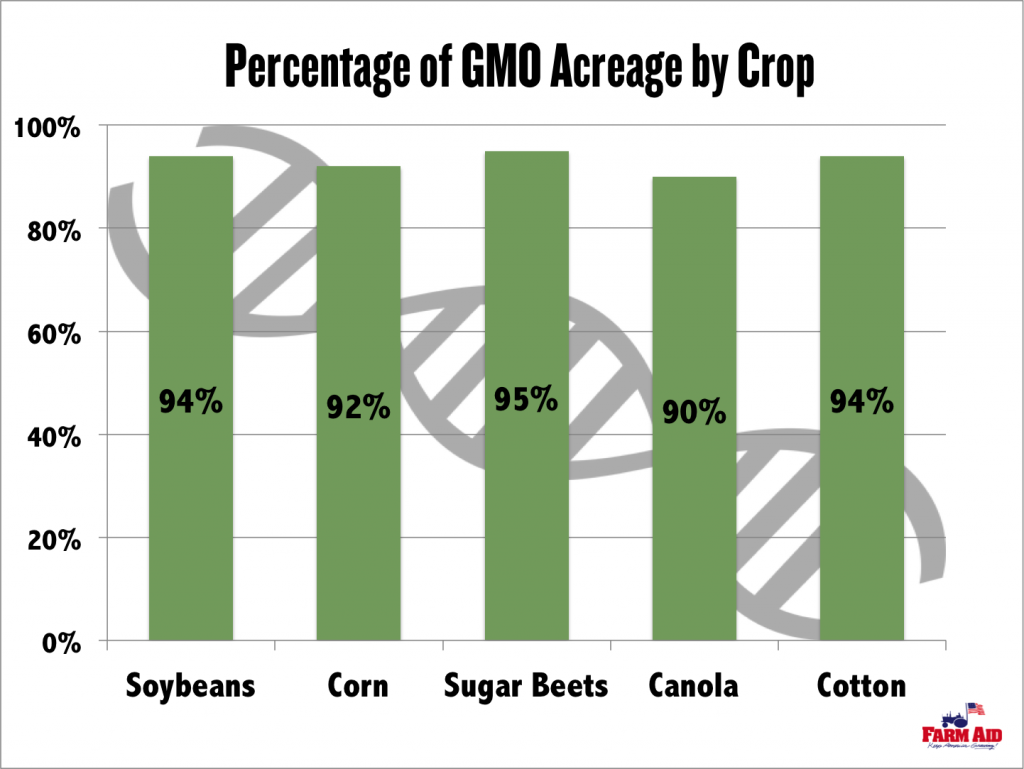Twenty years ago, the first genetically modified seeds hit the market. Since then, ethical, political, legal, environmental, economic and social concerns for the technology have emerged. With public dialogue about GMOs at a fever pitch, here’s what you need to know as a concerned eater.
What are GMOs?
Genetically modified organisms (GMOs) are plants, animals or microorganisms whose genetic material has been altered in a way that does not occur naturally. GMO technology can introduce individual genes from one organism into another and even across species. To date, the vast majority of GMO varieties are engineered to either survive the application of herbicides and/or to generate pesticides in their tissues to kill pests, although new types – such as anti-browning apple varieties – are starting to hit the market.
Are GMOs in my food?
Yes. In the U.S., several crops are almost entirely genetically modified. These include corn, soybeans, canola, sugar beets, cotton, papaya and, to a lesser extent, alfalfa. While those items may never appear on your dinner plate, these crops are ubiquitous in our food supply.
In processed foods, they show up as sugars, syrups, oils, emulsifiers and other additives. It is estimated that up to 80% of processed foods contain GMOs.
Meanwhile corn and soy constitute the bulk of the feed consumed by cattle, hogs and poultry, while alfalfa is a major component of feed for dairy cows. In other words: most of the animal products you eat depend on GMOs.
Today, new varieties of GMO vegetables and even a new GMO salmon variety are making their way to the marketplace. In short, your grocery aisles are a veritable GMO jungle!
Are GMOs safe?
Americans hear conflicting messages from industry proponents who are adamant about GMO safety on the one hand, and on the other by consumer advocates concerned that GMOs present new food toxins, allergens or diseases. But concerned eaters should be skeptical of blanket statements about the safety of GMOs – positive or negative. Here’s why:
Major federal and international agencies all say GMOs have been found to be safe to eat and current studies present no evidence of short-term health impacts. However, most research on GMOs is conducted or funded by the biotech industry and seed patents present major barriers to conducting independent studies on GMOs.
Different [GMOs] include different genes inserted in different ways. This means that individual GM foods and their safety should be assessed on a case-by-case basis and that it is not possible to make general statements on the safety of all GM foods.
– World Health Organization
In fact, the Food & Drug Administration (FDA) does not conduct independent research on GMOs and does not require animal or human testing – instead it makes decisions based on industry research. So, biotech companies will say that the FDA deems their products safe, while the FDA says it is up to the company to ensure the safety of the product! What’s more, there’s no post-marketing surveillance of GMO foods or of health impacts from their long-term consumption, despite recommendations from the National Academy of Sciences and the World Health Organization (WHO).
Major Blind Spots in Federal Regulation & Oversight
Through a so-called “coordinated framework,” three different agencies – the FDA, US Department of Agriculture (USDA) and Environmental Protection Agency (EPA) – have purview over a narrow aspect of GMO review and regulation. Time has shown that this regulatory regime – one based on laws crafted long before GMOs were ever conceived – has limited our government’s ability to address critical environmental and safety concerns.
For example, no agency is equipped to address GMO contamination, which has resulted in dramatic economic losses for non-GMO farmers. GMO production also goes hand-in-hand with pesticide use. The widespread application of glyphosate, known popularly as Monsanto’s Roundup herbicide, in combination with Roundup Ready GMO seeds has resulted in several unintended consequences that federal agencies are not equipped to address. The accumulation of glyphosate (now deemed a probable carcinogen by the WHO) in plant tissues, residues on our foods, and new glyphosate-resistant weeds and pests are threats to farmers and eaters alike.
Another Way: The Precautionary Principle
In the U.S., we often release new technologies and products into the market before we fully understand their risks and benefits. The consequences can play out through recalls, products bans, surprise side effects or benefits, new applications for a technology, and other newsworthy nuggets.
We are still learning so much about genetics: how genes are turned on and off, whether genes can survive digestion and remain active (they can!), what environmental factors influence gene expression. Several other countries regulate GMOs with better safeguards and more rigorous examination of risk than we currently employ in the U.S.
Key Food System Concerns
Biodiversity
Genetic diversity helps species adjust to new conditions, diseases and pests, and aids ecosystems in adapting to changing environments or severe conditions like drought. The importance of genetic diversity in food systems is well illustrated by the Irish potato famine. In the 1800s, much of the Irish population depended on the “lumper” potato almost exclusively for their diet. The country was a veritable monoculture – a great vulnerability that revealed itself when blight spread through the country, devastating the crop, the Irish population and its economy.
The sheer prevalence of GMOs in major field crops threatens the genetic diversity of our food supply. New challenges like climate change create an urgency to rebuild biodiversity. Farmers need as many tools as possible to do this – right down to the genetic code. Unfortunately, extreme consolidation in the seed sector has eroded traditional public seed and breed development. At a time when farmers need more options, not fewer, these programs need to be bolstered.
Contamination
According to the International Journal of Food Contamination, almost 400 cases of GMO contamination occurred between 1997 and 2013 in 63 countries. Part of the problem is the very nature of nature. Many plants are pollinated by insects, birds or wind, allowing pollen from a GMO plant to move to neighboring fields or into the wild. This “genetic drift” illustrates the enormous difficulty in containing GMO technology. Inadequate regulation to deal with genetic drift compounds the situation.
As consumer demand for non-GMO products grows, farmers are looking for opportunities to diversify into non-GMO markets that pay higher prices or shift away from GMOs altogether. Marketplace consolidation and the failure of regulatory, storage and distribution infrastructure to properly segregate GMOs from conventional varieties continue to frustrate these options for farmers and eaters alike.
Farm Aid Recommendations
When it comes to GMOs, the status quo is failing farmers and eaters alike. Farm Aid calls for:
- Transparency in our food system through mandatory GMO labeling, so people can make informed decisions about the food they eat; and build demand for non-GMO food.
- Stronger independent review and oversight of GMO crops, seafood, and livestock prior to their approval and following their release into the environment and marketplace;
- Antitrust enforcement in the highly concentrated private seed sector;
- Biotech companies to be held accountable for GMO contamination; and
- Increased funding for public plant and animal breeding to develop locally and regionally adapted seed and breed varieties.
Looking for Labels
Polls show that the vast majority of Americans favor GMO labeling, seeking more information about what’s in their food and how it is grown. But while the citizens of 64 other countries enjoy GMO labeling, Americans are still left in the dark.
Without mandatory GMO labeling, it is extremely difficult to avoid GMOs. But there are a few labels that can help shoppers. Look for the following:
 Under USDA’s National Organic Program products labeled organic contain at least 95% organic ingredients produced or processed without synthetic growth hormones, antibiotics, pesticides, GMOs, synthetic ingredients or irradiation. Products containing at least 70% organic ingredients are labeled “made with organic ingredients,” but cannot use the organic seal.
Under USDA’s National Organic Program products labeled organic contain at least 95% organic ingredients produced or processed without synthetic growth hormones, antibiotics, pesticides, GMOs, synthetic ingredients or irradiation. Products containing at least 70% organic ingredients are labeled “made with organic ingredients,” but cannot use the organic seal.
 The Non-GMO Project is a non-profit organization with a third-party labeling program for products grown without using genetic engineering. They verify that food products, from seed to shelf, are produced according to their rigorous best practices for GMO avoidance.
The Non-GMO Project is a non-profit organization with a third-party labeling program for products grown without using genetic engineering. They verify that food products, from seed to shelf, are produced according to their rigorous best practices for GMO avoidance.
Sources
- International Assessment of Agricultural Knowledge, Science and Technology for Development (IAASTD). Agriculture at a Crossroads. 2009. Island Press, Washington, DC. http://www.agassessment.org
- National Research Council. 2010. The Impact of Genetically Engineered Crops on Farm Sustainability in the United States. Washington, DC: National Academies Press.
- Price, B, Cotter, J. “The GM Contamination Register: a review of recorded contamination incidents associated with genetically modified organisms (GMOs), 1997–2013.” International Journal of Food Contamination. Dec 2014, 1:5
- Fernandez-Cornejo, J., Weschsler S.J., Livingston, M., Mitchell, L. (Feb 2014) Genetically Engineered Crops in the United States ERR-162. USDA.
- World Health Organization “Frequently Asked Questions on genetically modified organisms.”
– Last updated: March 17, 2016 –
Click here to download a printable PDF version of this document Read more about how GMOs affects family farmers and eaters




